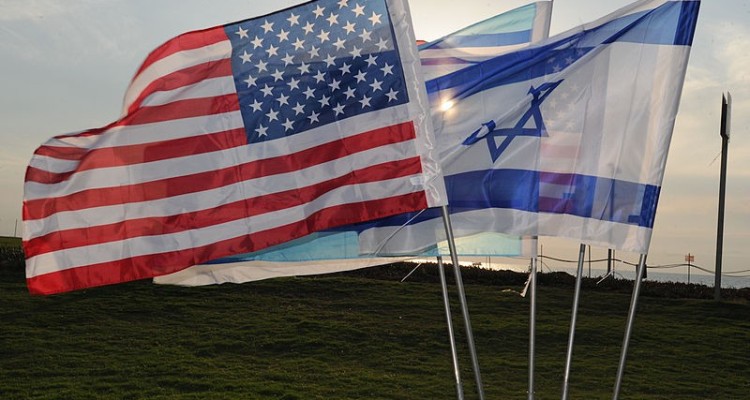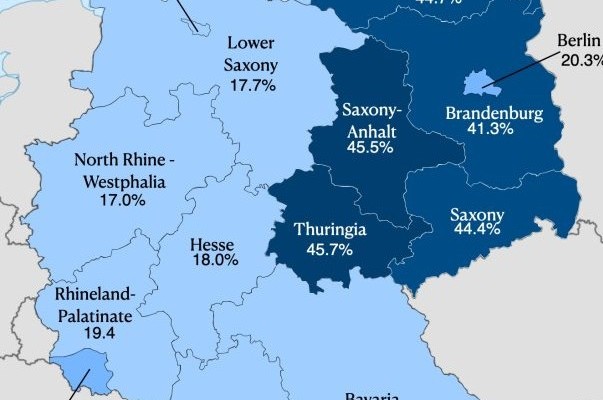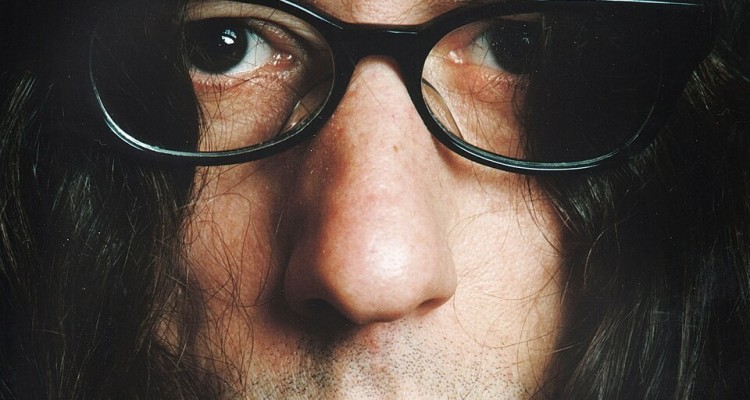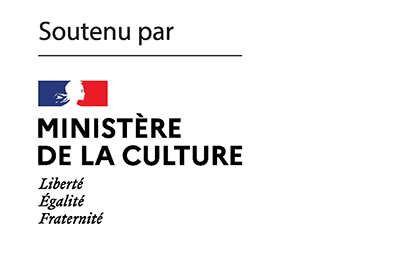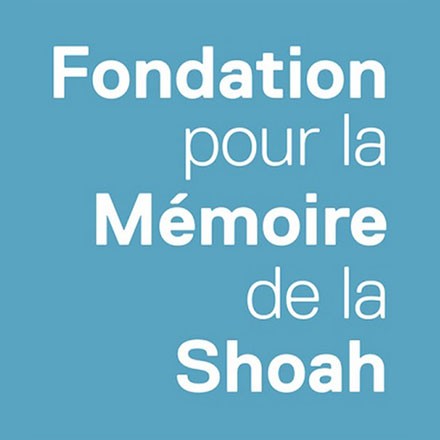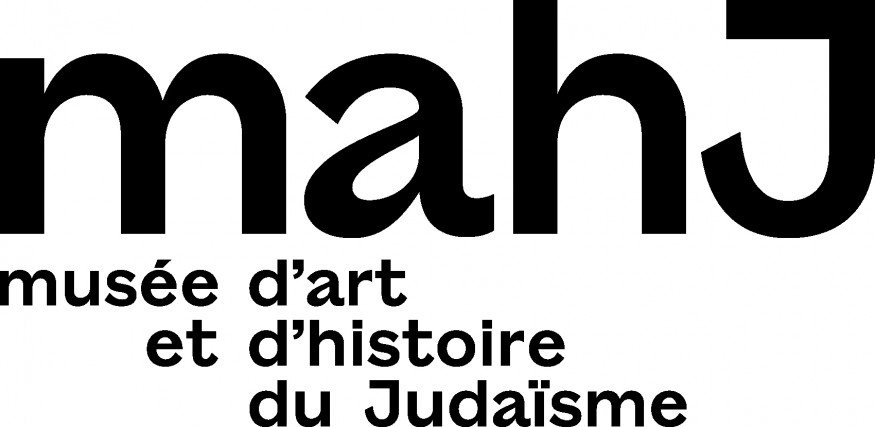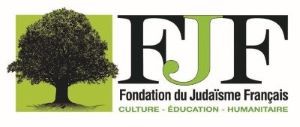(Notes from the Field)
Last week, Ewa Tartakowsky told us about the conditions under which a school visit like the one to the “Museum of the Poles Who Saved Jews During the Second World War – Ulma family” in Markowa takes place today, in the era of the PiS, Poland’s right-wing nationalist governing party. Here is the second and final part of this brush withg a biased, ethno-religious account of the history of relations between non-Jewish Poles and Jews in Poland.
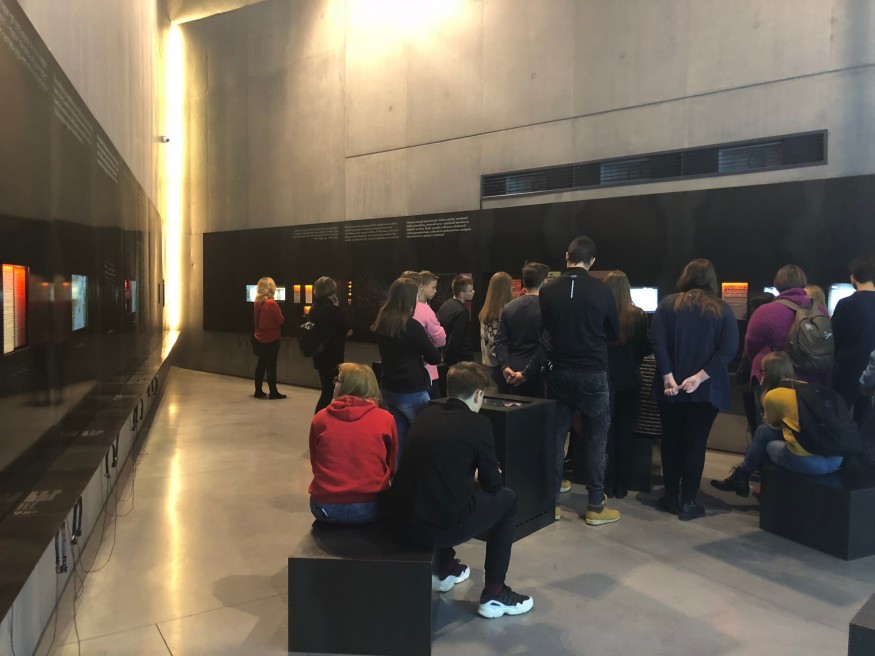
“In the period between the two world wars, 4,500 people lived in Markowa,” the guide begins. “Poles were the largest community, followed by Jews, Ruthenians and Germans. From the point of view of religious beliefs, we have Catholics, believers of Judaism, Greek Catholics, Orthodox and Protestant evangelists. The photographs presented in the exhibition are an ideal example of this multiculturalism.
Here we are at the heart of the memorial devices of historical politics: a modern exhibition on the multicultural aspect of pre-war Poland, a guarantee of a climate of tolerance. The same is true for the period of the First Republic [or noble-led democracy, which began in the mid-fifteenth century and ended with the last partition of Poland in 1795], which is considered in official discourse to have offered a haven of tolerance to Jews fleeing pogroms and expulsions in Western Europe. The projects carried out by the IPN promote this narrative.
What I can see in Markowa seems to go in this direction: the Jews are mentioned here only as an evocation of an ethno-religious national history. This is also how the sociologist Geneviève Zubrzycki interprets the debates around questions related to Jewishness in the broad sense. From the “war of the crosses” to Auschwitz[1], she draws an analysis of the discussion, not about what is commonly called in Poland “Polish-Jewish relations,” but about the nature of national sentiment and its reconstruction in the post-communist period. Based on the analysis of initiatives for the valorization of Jewish heritage in Poland, she draws a similar conclusion: “philosemitic” projects are part of a desire to reconfigure the strictly ethno-religious conception of national identity. Indeed, in this context, their “Jewish” components are a political marker, often assumed by their actors, which aims to “counterbalance” this “ethno-religious” conception. The teachers I met during my observations of the trainings on the history of the Shoah at the Shoah Memorial in Paris (2018), at the Yad Vashem Institute in Jerusalem (2018) or at the Galicia Jewish Museum in Krakow (2019) attest to this same dynamic[2].
Polish “Generosity” as a Founding Myth
The guide now stands in front of a black panel presenting a series of eight retro photographs illuminated with a green light: “These are the images that show [sic!] the multicultural character [wielonarodowość], but also Polish-Jewish relations.” Photograph number three shows two boxing teams that fought in 1936 in Rzeszów, and the second photograph – numbered 7 in the exhibition – shows a first communion in Rzeszów. The Catholic children are dressed in white. Behind them are other children dressed in black. These are Jewish children. In the description that we have in our collections, we can read that the Jewish children are very honored to be able to participate in the religious activities of their peers. I cannot help but see in this statement a condensed history of the Jews: symbolism of white and black, positioning in front and behind, supposed gratitude for having been accepted…
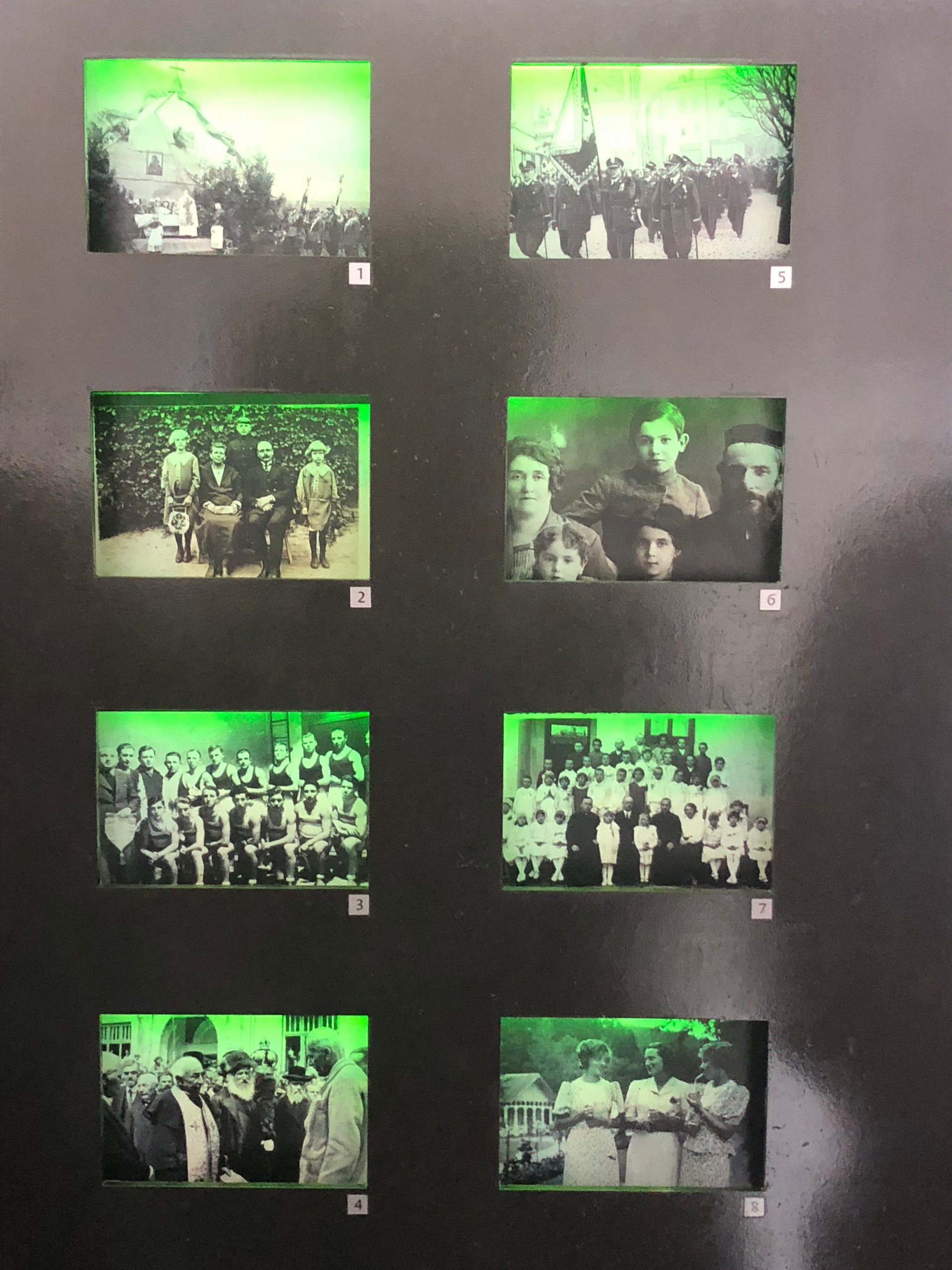
The guide continues: “But if we look closely, we can see that the Jewish children are only boys. No girls.” The guide punctuates this statement with a knowing silence and leaves us to digest it: no comment on the patriarchal character of the “Poles” of the time. In this configuration, the Poles were not only welcoming and generous towards the Jews, but also much more progressive in terms of equality between men and women. This last aspect comes to the fore when the guide quotes the diary of Basia Rosenberg, who, at the age of 15, was preparing for a business school diploma: “Basia wanted to be a saleswoman, to be in contact with people. But we can also add something else: if the Second World War had not broken out, she could already have been a young mother or a married woman. Why?” Silence in the audience, suspense… “Because the Jewish religion and tradition allow marriages for girls from the age of 12, for boys from the age of 13.” Here again, great silence before moving on to the other windows. I observe the students. They do not seem to be disturbed by this statement which, once again, implies an almost naturalized social backwardness of the Jewish communities vis-à-vis their Catholic fellow citizens.
The tour continues… “Polin in Yiddish means Poland,” the guide informs them. “Poland was the country inhabited by about three and a half million Jews, which constituted the largest diaspora in Europe at the time.” I move closer to hear better, because this is a founding myth of Polish “generosity”. The guide continues with his multiculturalist approach. “Children [non-Jewish and Jewish] played together in the same playgrounds [zabaw square], in the same yards. The shopkeepers respected each other […], you could buy what you wanted. The Polish priest walked hand in hand with the rabbi in the village square, they discussed God, they went to each other’s temples. The Catholic priest would go to a synagogue of the Jews, the rabbi to a synagogue of the Catholics.” Or vice-versa…
The landscape that emerges is more than idyllic and leaves no room for the massacres or manhunts for Jews organized by the Catholics in this region of occupied Poland. All of these things are very real and well documented. I am reminded of the article by historians Jan Grabowski, who is currently being sued along with his colleague Barbara Engelking, and Dariusz Libionka[3]. This text was ‘refuted’ by Anna Stróż, director of the Museum at the time, because the authors mistakenly situate the Museum’s location on the very site of the Ulma house. “It is clear that these two authors did not look at our exhibition properly,” she said during her presentation of the Museum at the “Places of Memory of the Second World War in Poland” day, organized by the Polish Institute in Paris in November 2017. The technique is well-tried: one seizes on a factual error to invalidate the entire statement; it was widely deployed with regard to Jan Gross when he was attacked about the exact number of victims at Jedwabne. The fact remains that both historians, Grabowski and Libionka, document well the context in which Markowa was located during the Second World War. In this region, including the village we are interested in, “everywhere the ‘navy blue’ [granatowi] policemen[4], firemen and often the closest neighbors were busy tracking down refugees from the towns and villages. It is precisely the omnipresent fear in front of neighbors who were perfectly aware of the reality that explains why the rescue of Jews became the most dangerous form of conspiracy in occupied Poland.”
None of this is reflected in the exhibition at Markowa. Only the story of the rescue, decontextualized, matters. And here we are: the part of the exhibition dedicated to it opens before us. The very notion of “rescue” [ratowanie] is never questioned, as if the Jews were not active in their own rescue. In the official narrative, they at best carry out insurrections in the ghettos, often aided in this by non-Jewish Poles, and at worst remain passive. Survival strategies that incorporate Jewish subjectivity are rarely addressed, with the exception of work by researchers at the Center for Holocaust Studies.
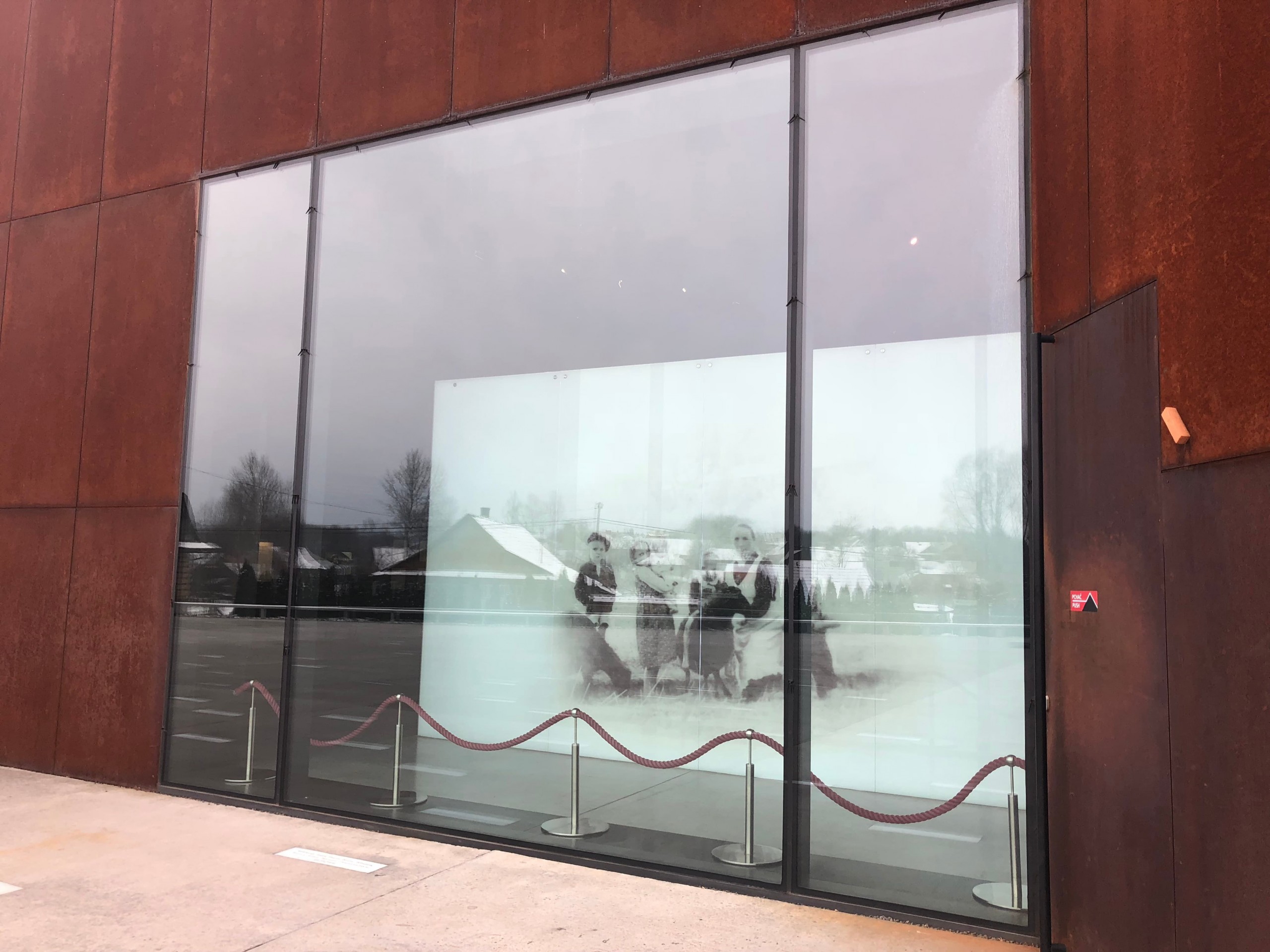
The section of the exhibition on rescue begins with a reminder – omnipresent in official speeches and textbooks – of the death penalty for those who rescued a Jew, a norm “unique in all of occupied Europe” and which concerned not only the rescuer but also his family. Every time I hear this story, I think of Robert Szuchta’s[5] remarks made during a preparatory lesson for the Polish teacher training at Yad Vashem on October 14, 2018, held at the Polin Museum of Jewish History, which I attended as part of my ethnographic observations. Addressing this topic, he had insisted: “In Lithuania, Ukraine, Serbia, and Galicia, which did not then fall within the district [of the General Government of Poland], anyone who came to the aid of Jews risked the death penalty. I don’t know why in Poland, even the great authorities, like Bartoszewski[6], say that only Poland had this legislation. This is the official version.
The story that the Markowa Museum tells of the Righteous Among the Nations of the Podkarpacie region is the story of a territory where “the Germans massively killed Poles and Jews,” says the guide. The legend of a map that lists the main places of massacre is reversed: “Jews and Poles.” This inversion in the guide’s words may seem like a detail; however, it resonates with the overall structure of the story we discover, in which the “Poles” were victims of Nazi oppression in the same way as the Jews.
The Competition of Memory, Great Guns
This perspective objectively implies a “memorial competition,” which is far from being new in Poland, and to which a large number of Polish “martyrological” museums bear witness. If this conception of history is not new, it is exacerbated by current historical policies. The project to create a “Polocaust” museum, launched by Marek Kochan, is an illustration. The objective would be to “document the actions aimed at the extermination of Poles as a nation” from the period of the partition of Poland by the Russian, Prussian and Austro-Hungarian empires in the 18th century to the 20th century[7]. Among the key moments of the journey would be the Volhynia massacre, which in 2016 was labeled by the country’s parliament as “genocide,” with July 11 becoming the National Day of Remembrance for the victims of the genocide committed by Ukrainian nationalists against the citizens of the Second Republic. The parallelism of the crimes committed against non-Jewish Poles and the genocide of the Jews feeds this new martyrological framework. As Marek Kochan points out: “Polocaust is not Holocaust. [It is] something else that threatens the life of the whole nation. Polish victims also have the right to commemoration. […] Knowledge about the degree of extermination of Poles, not only Polish Jews, is very low in the world. The State of Israel has succeeded in imposing a narrative that reduces the victims of the war to the victims of the Holocaust. No death that results from murderous intentions is, however, better or worse than any other.”
Some commentators denounced this as a farce, and the project never materialized. But Jarosław Sellin, Secretary of State at the Ministry of Culture and National Heritage in Poland, supported the idea in a radio interview, “I consider that the terrible fate of Poles during the Second World War … deserves such a narrative.”[8]
In the book In Honor of the Merciful. Szpytna and Szarek’s Ulma Family, one of the chapters is entitled “Today the Jews, Tomorrow the Poles,” thus counterfactually presenting the policy of the Nazi occupier as indiscriminate, except for the chronological order of oppression, toward Jews and non-Jewish Poles.
A Nation of Righteous Among Nations?
We continue the visit with our guide: “The second map represents the places where the Jews received help: from the Poles, from the Catholic Church, from the Polish underground state.” This time, there is no difference bet seen the guide’s words and those of the placard. The sign says: “Help was most often given by ordinary people. It was also given by the Polish underground state and the Catholic Church.” “Such a typology, however, makes no sense,” historians Grabowski and Libionka have already pointed out. “It is not known how many Jews were saved thanks to the help of the clergy. […] … in the Rzeszów region, [the] activity [of the Polish underground state] was not particularly visible,” they said. [9] In fact, the map of the Podkarpackie region in the exhibition is sprinkled with small dots indicating the towns and villages where Jews were helped, without any distinction as to the actors involved in this help. As the two historians point out, the exhibition does not mention the help provided by the Ukrainians. The only mentions of their existence are in the legend of a map that identifies the territories they inhabited and in the mention of the Ulma family’s informer, a certain Włodzimierz Leś, a “blue-marine” policeman from Łańcut, who, as the exhibition points out, “was of the Greek-Catholic faith, which is why some considered him Ukrainian.” Is this a subtle way of clearing the Polish Catholics? We do not know more because the guide will only mention Leś during the question-and-answer session after the visit, when some of the students have already gone to collect their jackets and coats.
This narrative, which emphasizes the exemplary character of the Catholic Poles, is in harmony with the words of many political leaders, creators and bearers of current historical policies on the Polish “Righteous.” Thus, President Andrzej Duda, on the occasion of the inauguration of the Museum, refers to “tens, hundreds of families similar to the Ulmas; thousands of people who gave their lives to help their fellow citizens.”[10] Other architects of this policy put forward even larger figures, such as Jan Żaryn, when he states that “there were no less than one million such Poles” and that “the list of more than six and a half thousand Poles honored by the Yad Vashem Institute is only the tip of the iceberg.”[11] A number of other initiatives have recently emerged to “count” these Polish saviors of Jews.
Time speeds up: we arrive at the last part of the visit, which focuses on the commemorations. I concentrate on the photographs in a slide show, whose religious vocabulary I immediately notice. A virtual board, entitled “Righteous Among the Nations,” reads: “On the website of the institute [Yad Vashem] it was written in 2003: ‘The crime against the Ulma – when the whole family was killed with the hidden Jews – became the symbol of Polish sacrifice and martyrdom during the German occupation’. The plate “Servants of God,” carries the following text, “In 2003, on the initiative of priest Stanisław Leja, a process for the beatification of the Ulma family began at the diocesan level in Przemyśl. Since 2011, the Congregation for the Causes of Saints has been conducting the next stage [of the process]. In 2013, Pope Francis became aware of the tragic fate of the Ulma family. The story of the Polish family was told to the Holy Father by the vice marshal of the Subcarpathian voivodship [region] Bogdan Romaniuk as well as the priest Seweryn Wagner of the Archdiocese of Przemyśl, [the same priest] who went to the Vatican to ask the pope to baptize a foundation stone for the construction of the Ulma Family Museum in Markowa.” Finally, a last plate is entitled “In the Name of the Republic.” It bears the inscription: “In 2010 President Lech Kaczyński decorated post-mortem Wiktoria and Józef Ulma with the Commander’s Cross of the Order of Polonia Restituta. On February 9, 2010, the first lady, Maria Kaczyński, presented the decoration to the closest family of the murdered: Jerzy Ulma and Stanisław Niemczak.” Here again, I find this confluence of national and religious colorations, already mentioned.
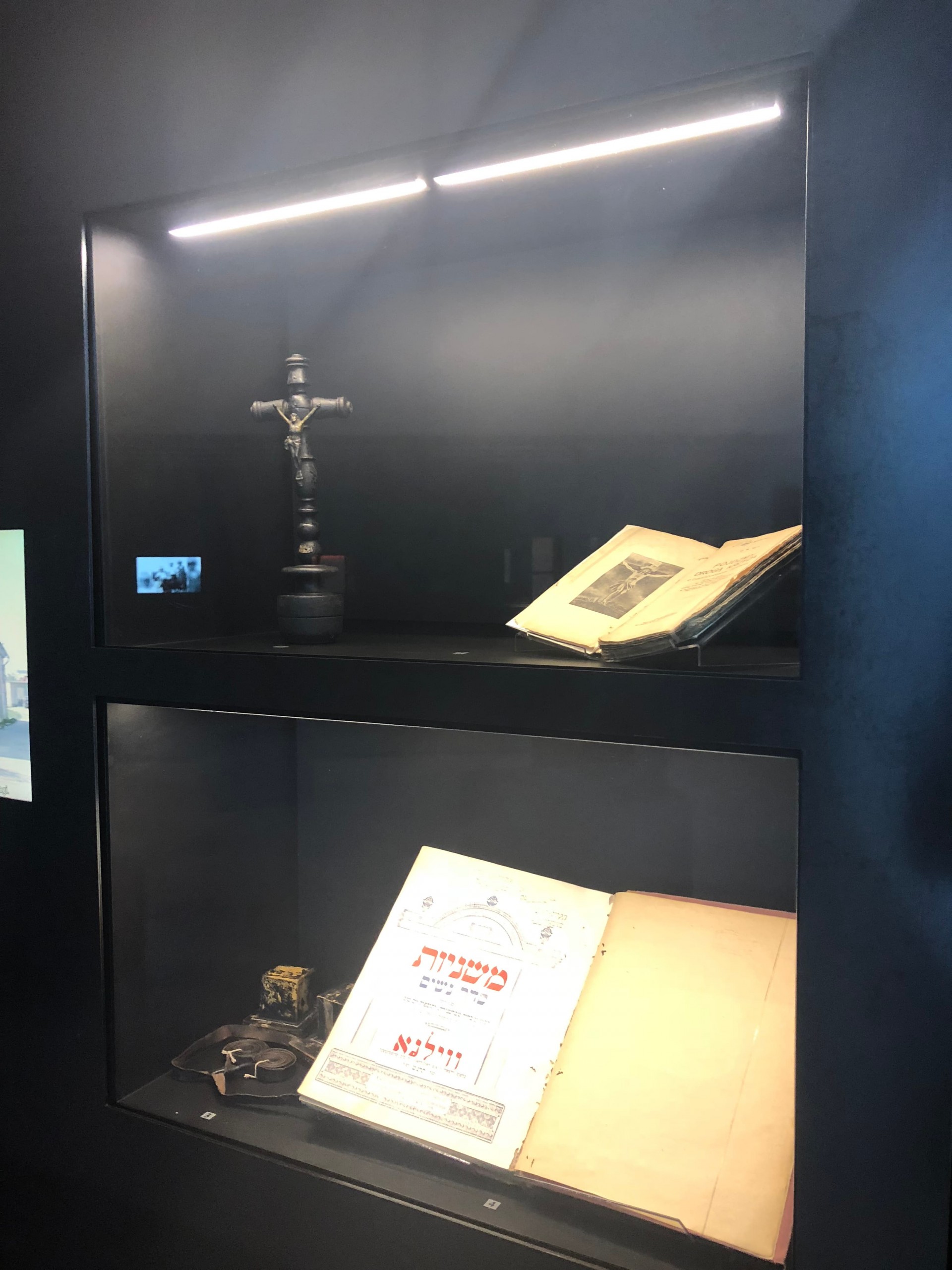
Question Time for the Students…
The visit comes to an end, it’s time for questions. A pupil asks which festivals were celebrated at the time of the Ulma. The guide talks about the making of Christmas decorations or other decorations for Easter. The student seems surprised. Without going so far as to confront her, she asks: “Were these Jewish holidays or Polish holidays? Not letting her finish her sentence, the guide hastens to answer, “It’s, it’s… they were mixed. Because, as an example, when we had [first] communion, the Jews went too. And if you take Hanukkah, that is, the festival of lights, which has just ended, the Poles also participated. If we take the relationship of Abraham Segal [hidden by the Cwynar family in Markowa], then the simple fact that the Cwynar family unmasked him [according to the relationship, the Cwynars took in Segal as a helper on the farm; his name was Romek and the Cwynars seemed to be unaware of his Jewish identity] testifies to the fact that they knew what their traditions and culture were; their neighbors were probably Jewish and they may have noticed [in this case, according to the guide, the fact that Segal held his prayer book under his elbow, a gesture that is said to be typical of Jews… ]. But what we can say above all is that they went to each other’s houses to chat or have dinner.”
Obviously, this idyllic description is too perfect, even for this audience: “You present this world in a way that is, how can I say, ideal. Was it really so good to live in Markowa?” asks one student. “No, no,” replies the guide, “It was in the whole country!”. “Ah, yes?”, the child is astonished, dumbfounded. “Yes!” replies the guide. “The period between the two world wars was a more… [he searches for the words] symbolic period. Because many nations lived side by side, many religions and cults. As an example, in my hometown, in Włodawa in the Lublin area, in addition to Jews and Poles, there were Ukrainians. And they all marched side by side for the Feast of the Magi to bless the Bug River, so that everything would be okay, that is, on January 6[12]. So they agreed symbolically on this date of the three wise men to bless Bug. And they paraded. And all of them even met for the traditional vodka.” “But these were independent holidays…”, again, the girl cannot finish her sentence. “Yes!”, the guide says. “I mean [the girl tries to clarify] the holidays of each community or all together, united at once by religion?
A teacher, who has already winked at me several times, intervenes: “It’s a little hard to believe that it could be so – she insists on the word – good”. The guide persists: “But you can believe me that it was like that! Did the religions mix? They mixed. And when it was necessary to get married, which could obviously cause some problems, then someone had to convert to a given religion.” We will not know what the balance of power was and who had to convert more often: the Catholics or the Jews? “It’s strange,” the student concludes with a wry smile on his lips.
It was the turn of another teacher to ask her question: “So here were one hundred and twenty Jews living and twenty survived. They were all hidden by peasants?”
– “Some were hiding, some were obviously killed, as an example, here in Markowa. Seventeen people died, but there were also other shootings.
– “Because it is a significant proportion. Why did these people die when they were hiding if relations here were good and there was no conflict?”
– “And yes, there was no conflict.”
– “Then why? Were they hiding badly?” the teacher questions with a tinge of irony.
A woman, who looks like she’s in charge of the museum, comes to the rescue. She corrects: “Here, not only did the Jews live, but also…” “… the Poles,” the guide finishes. The teacher does not abandon her thread – “4000 inhabitants and 120 Jews…” – but the woman – obviously an authority figure – interrupts her again: “It’s that, quite simply, the Germans chose here who was a Jew, who was a Pole, and they shot them, quite simply.”
The guide clarifies: “That is, they could shoot both Poles and Jews. Especially after the October 17 communiqué [on the death penalty for helping Jews]. Then the Poles started to fear for their own lives. A part of the people could hide Jews but did not do so for fear of their own lives.” “Obviously, they were afraid…”, the teacher resumes. “Obviously,” the leader concludes. But the teacher does not give up so easily: “But I wonder, in spite of everything, why so many Jews died when there was such a good atmosphere here and they [the farmers] were so willing to help? There must have been someone who denounced…?” “Because afterwards, that is… [answers the guide hesitantly], I don’t know how things actually happened here. We can say that these people – from the case of Łańcut or Włodawa -…goods were given in custody to trusted people. And knowing what their goods were – for example a pot with gold – it was necessary to get rid of these people. And here we can talk about the appropriation of goods.” The first problem with this idyllic narrative that only “the Germans” are guilty emerges. In fact, “the pot of gold” refers to a cliché of anti-Semitism and to one of its popular representations in Poland: the Jew with a silver coin.
“That’s it!” the teacher concludes. But the museum does not want to leave us with this negative conclusion: “Such situations undoubtedly also existed,” the “also” is pronounced with insistence.
This “also” refers, however, to the broader context of help given to the Jews that the exhibition ignores. For by focusing on the sacrifice of Polish Catholics, it is a matter of “domesticating the Holocaust,” as Grabowski and Libionka put it. In this narrative, there is no question of dwelling on the complexity of the situation: that of the courageous commitment of non-Jewish Poles to their Jewish fellow citizens, that of the massacres organized by other neighbors, and finally that of the borderline situations where help was given and taken back, where the same people sometimes hid and sometimes denounced the Jews.
In this process of fabrication of a historicized myth, heroization through the valorization of the figure of the “Righteous” man or woman corresponds to the national ethno-religious discourse which implies a strong homogeneity of martyrological and heroic cultural identity, a discourse inherited from the period of construction of Polish nationalism in the 19th century. The memorial, historical and scholastic policies of the PiS since it came to power in 2015 are not, in fact, a novelty. The recognition and valorization of the “Righteous” has existed since the national turn that began when Władysław Gomułka came to power in 1956. At the time of the anti-Semitic campaign orchestrated by the government, in 1968, the “Righteous” embodied in the official discourse on the one hand the lack of recognition of the “Poles” on the international scene, and on the other hand the “ingratitude” of the Jews towards the Polish nation that had “welcomed” them and worked to save them.
This absence of a radical rupture does not exclude moments of acceleration, crystallization, and precipitation, which push along this ethno-national repertoire to a hegemonic stage. It remains to be seen whether it is appropriated by society. In contrast to the sometimes contradictory narratives emanating from different social groups of non-Jewish Poles (those of organized resistance, those of the “displacement” of populations following the modification of borders after the Second World War, those of forced conscription in the Wehrmacht, etc.), those on the past of the Jews promoted by institutional mechanisms have all the more of a chance of penetrating social memory as they do not precisely come from direct family histories, or very rarely so. Insofar as they are the stories of a group considered de facto to be “outside” the nation, they are often assimilated “unfiltered” with the exception of the reflexive interpretation frameworks transmitted in extracurricular settings.
One can legitimately question the effects of such a training and visit. For the organizers, it is a matter of achieving a critical reflexivity with regard to official narrative devices, which is reflected in the students’ questions at the end of our museographic journey. However, the same students’ projects on the theme of the Polish Righteous Among the Nations, which comply with the instructions of the training program, partake of these same narrative devices. The focus is on the Righteous and their sacrifice. Despite the many reminders of the term sacrifice, which is specific to Christian semantics, the students in fact adopt the most commonly-used vocabulary, that of official speeches, textbooks, the media and, for those who attend them, Masses and the church. In most projects, Jews often “lose” their identity in the literal sense of the word: their names are not mentioned or are mentioned only peripherally, so that they quickly become “that” Jew, “those” Jews.
The experience of this visit seems to confirm a difficulty in influencing the perception of the Second World War in a society where national sentiment was built on the basis of axioms of heroism and martyrdom. For all that, even if it is not free of a certain “philosemitic violence,” to use Elżbieta Janicka’s and Tomasz Żukowski’s expression[13], this type of training, like others, already makes it possible to talk about the history of the Jews, to learn about this social group whose presence, since the Shoah, has been reduced to a few thousand individuals. This structural tension between, on the one hand, the demand for scientificity and, on the other hand, the taking into account of the subjectivity of the actors, reminds the researcher insistently of a certain humility of approach and, above all, of the absolute necessity of placing these “Judeophile” projects in a context of cultural hegemony of an ethno-Catholic vision of national identity.
The visit is over. We took the bus back to Krakow where, tomorrow morning, we will meet at the Institute of European Studies of the Jagiellonian University for the last day of training for this weekend. Night falls quickly in this season and already we are driving back in the dark. Some of the students have fallen asleep, others are whispering about the same topics discussed on the trip here. Back and forth. Markowa and the Righteous are behind us. A parenthesis closes.
Ewa Tartakowsky
Notes
| 1 | Geneviève Zubrzycki, The Crosses of Auschwitz. Nationalism and Religion in Post-Communist Poland, Chicago/Londres, The University of Chicago Press, 2006. |
| 2 | Ewa Tartakowsky, « L’enseignement de l’histoire de la Shoah en Pologne depuis la réforme de l’Éducation de 2017 », in Audrey Kichelewski, Judith Lyon-Caen, Jean-Charles Szurek et Annette Wieviorka, Les Polonais et la Shoah. Une nouvelle école historique, Paris, CNRS Éditions, 2019, p. 259-273. |
| 3 | J. Grabowski et D. Libionka, « Bezdroża polityki historycznej… », op. cit. |
| 4 | Polish police during World War II, auxiliary force of the German Civil Guard. |
| 5 | Robert Szuchta is a history teacher in a Warsaw high school. He is also an educator of teachers of Holocaust history and author or co-author of numerous pedagogical tools in this field. |
| 6 | Wladyslaw Bartoszewski (1922-2015) is a Polish historian and politician, decorated with the medal of the “Righteous Among the Nations” and co-author with Zofia Lewinówna, of the book Ten jest z Ojczyzny mojej. Polacy z pomocą Żydom 1939-1945 [This one is from the Fatherland. Poles helping Jews 1939-1945], Cracovie, Znak, 1967. |
| 7 | Marek Kochan, « Zbudujmy szybko Muzeum Polokaustu », Rzeczpospolita, 19.02.2020. |
| 8 | Piotr Gociek et Jarosław Sellin, « Jarosław Sellin o polskiej polityce historycznej », Sygnały dnia, Polskie Radio 1, 20.02.2018. |
| 9 | J. Grabowski et D. Libionka, « Bezdroża polityki historycznej… », op. cit., p. 622 et 623. |
| 10 | Andrzej Duda, Inauguration speech d’inauguration of the Museum, 17.03.2016. |
| 11 | Jan Żaryn in the interview with Joanna Miziołek, « Żydzi i Polacy to sojusznicy », Wprost.pl, 16.04.2016 |
| 12 | Celebrated in the Greek-Catholic and Orthodox churches in memory of the baptism of Christ in the Jordan River, the celebration consists in baptizing the nearest river, in this case Bug. |
| 13 | Elżbieta Janicka et Tomasz Żukowski, Philo-semitic violence. New Polish narrative about Jews after 2000, trad. du polonais par P. Chojnowska, K. Kaszorek et K. Stoll, Varsovie, IBL PAN, 2016. |
